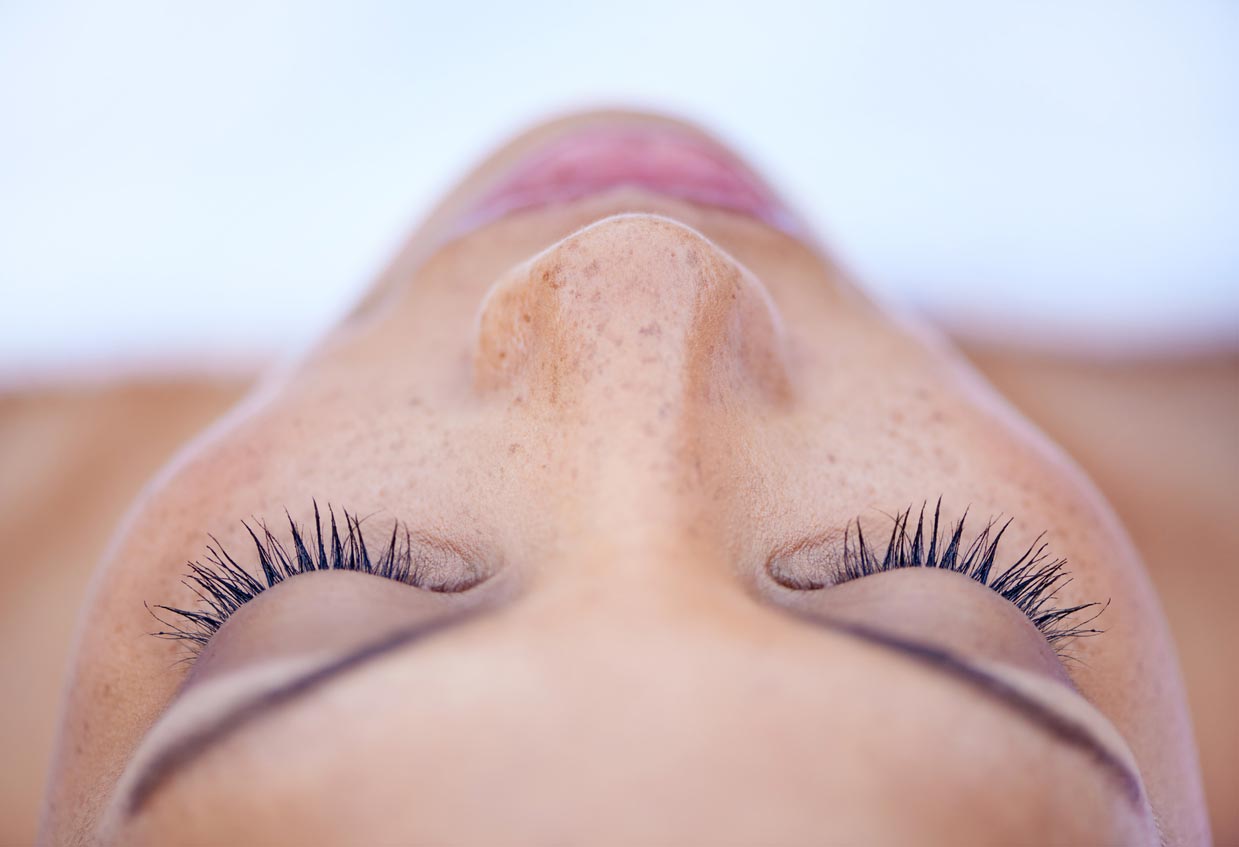Latisse® – Glamour by Prescription

What do you do with a pharmaceutical formula that turns out to have cosmetically appealing effects? Take it to market, of course! Allergan is a company that knows an opportunity like that when it sees one – after all, they did it with Botox™. 302 Now they’re doing it again with Lumigan™, a prescription medication used as a first-line drug to treat glaucoma since 2001. 303 One of the pleasant side effects of this highly effective medication for lowering the increased intraocular pressure (IOP) common in glaucoma patients 304 was longer, thicker, and darker lashes. 303 On December 24, 2008 the FDA approved Allergan’s petition to market it as a prescription drug for this purpose under the name Latisse™. 305
In one 4 month clinical trial with 278 volunteers, 78% of those given Latisse (rather than the placebo) grew 25% longer, 106% thicker and 18% darker (more noticeable) eyelashes. 306 Glamorous lashes do come at a luxurious price, though: $120 for a month’s supply of Latisse with applicators, and the effect is not permanent. Lashes are expected to gradually return to their original state if treatment is ended. 306
How does it work?
The effects of Latisse are gradual in the first few weeks of treatment, but by the 8th week are significantly visible. 306 The exact mechanism by which Latisse works is not known, but Allergan speculates that it may simply increase the growing phase of the eyelash hair cycle. Users apply one drop of Latisse with a disposable applicator once a day before bed. It must be applied on the upper eyelid, along the base of existing eyelashes, and can not be used on the lower lashes.
Is it safe?
Bimatoprost, the same active ingredient used in Latisse, has been used in Lumagin for glaucoma patients for over 8 years. In 2008, a meta-analysis of 13 studies involving over 1300 patients indicated that bimatoprost was not only an effective treatment for lowering IOP but was also well-tolerated. 304
Side effects that may occur include:306
- red, itchy eyes
- hyperpigmentation of eyelid (usually reversible after treatment ends)
- decreased eye pressure (IOP)
- increased brown pigmentation in the iris (may be permanent)
- inflammation of the eye
- hair growth outside the desired area (if applied repeatedly), or non-matching direction or differing amount of growth from eye to eye
- macular edema
- bacterial infections (not using a sterile applicator on each eye only once increases this risk)
During the clinical trial mentioned above, less than 4% of the participants experienced side effects, and none had any eye color change. Some dermatologists argue that clinical trial data on Latisse was too short term to conclusively judge safety and side effects, pointing out that some glaucoma patients have experienced permanent eye color change within a year after using Lumagin.
Animal studies using much-higher doses than recommended for either Lumigan or Latisse found an increased risk of fetal death and bimatoprost was excreted in breast milk, so pregnant or nursing women should not use without consultation and advice from a physician. Bimatoprost was not shown to be carcinogenic or mutagenic in animal studies, nor did it impair fertility in either gender.306
One very small clinical investigation of 5 glaucoma patients with topical bimatoprost (of the same potency but in greater amounts than Latisse) for up to 4 years observed changes in the skin and fat structure of the eye and eyelids that resulted in a sunken, aged look to the eye. Changes in 2 of the 5 patients were not attributable to an underlying condition, suggesting that patients should be aware that bimatoprost may cause these effects. 308
Is it right for me?
Although a relatively new product, the active ingredient in Latisse has been used safely by many people for over many years in the form of Lumigan. 304 One can reasonably conclude, as the FDA did, that this safety record would carry over to Latisse. If you are experiencing hypotrichosis, whether by heredity, injury, or due to chemotherapy, you may find the dramatic effects of Latisse to be well worth the cost of an expensive cup of coffee a day.
However, Latisse can only be obtained by prescription, and your doctor will discuss the specific risks and benefits particular to your case. You should be sure to tell your doctor if you have glaucoma or any other condition associated with increased or decreased IOP, and if you have a condition (like poorly controlled diabetes) that increases your risk of macular edema.



